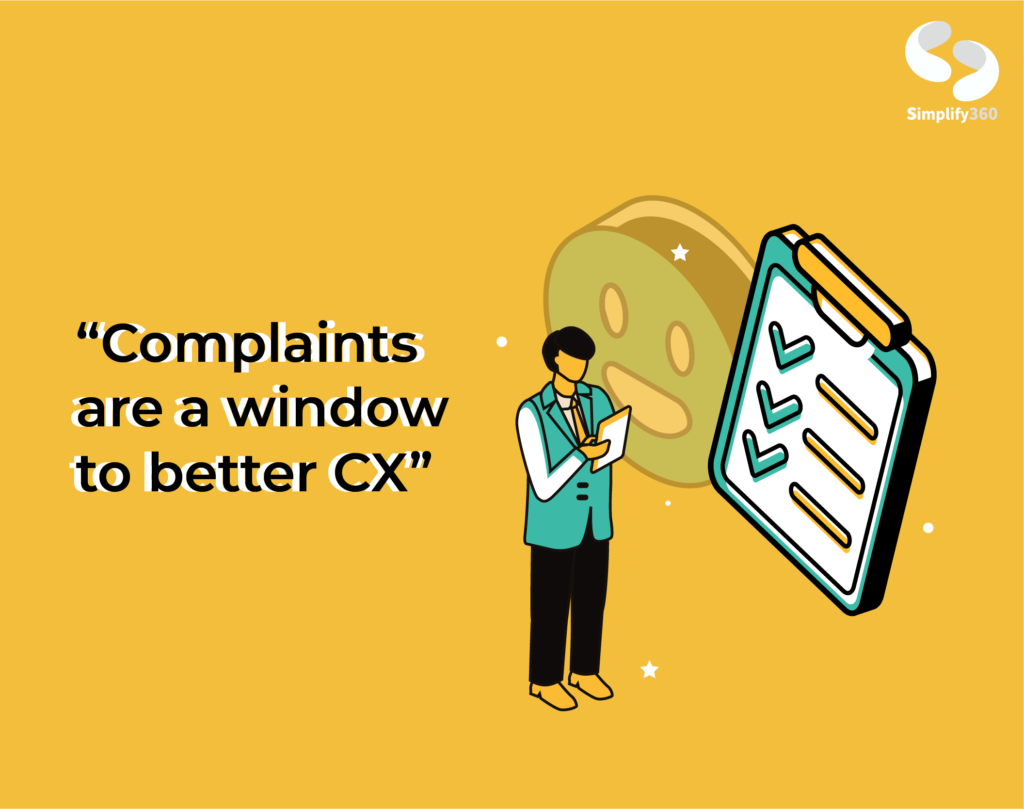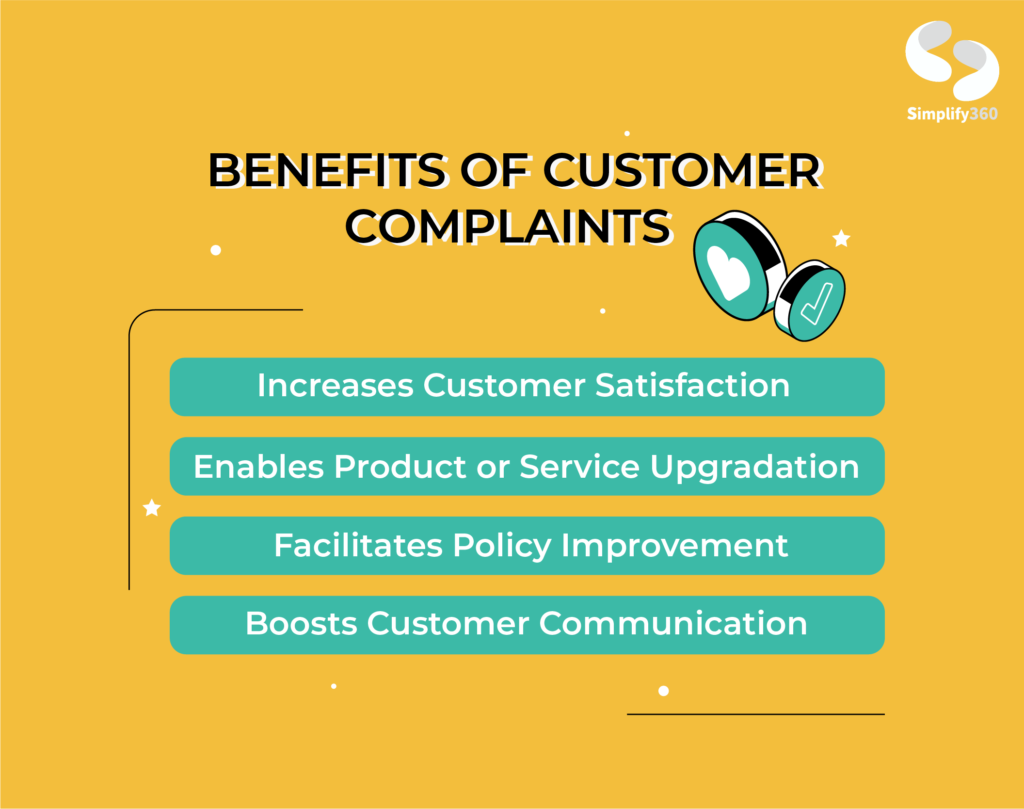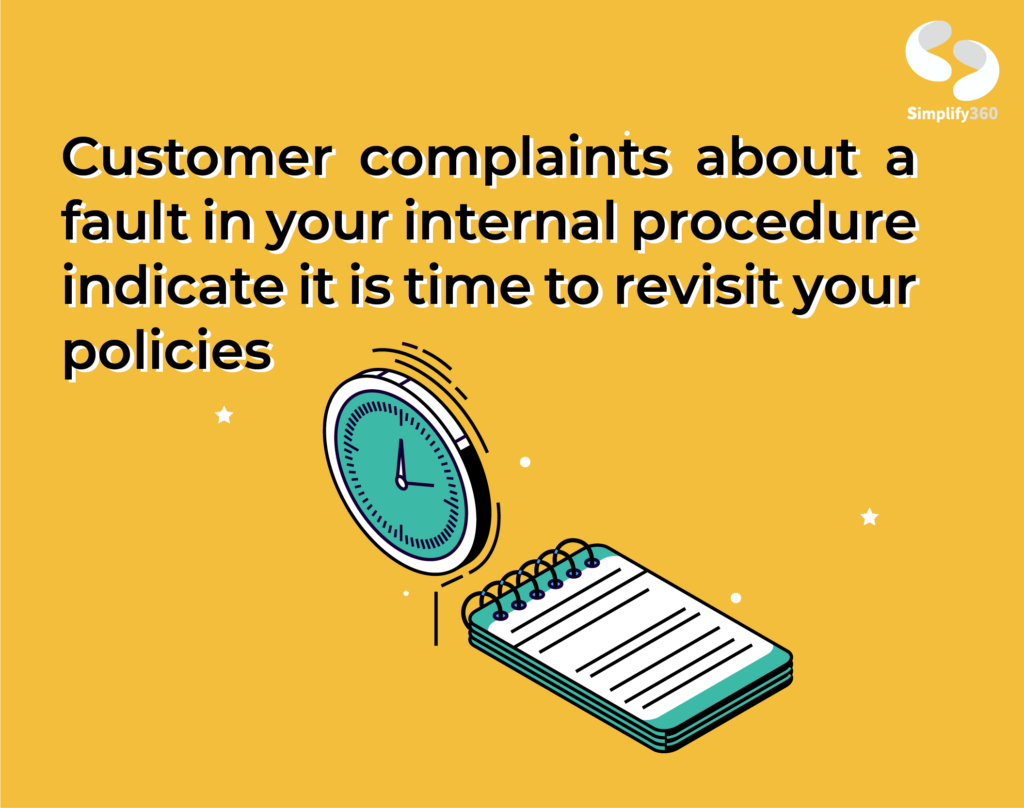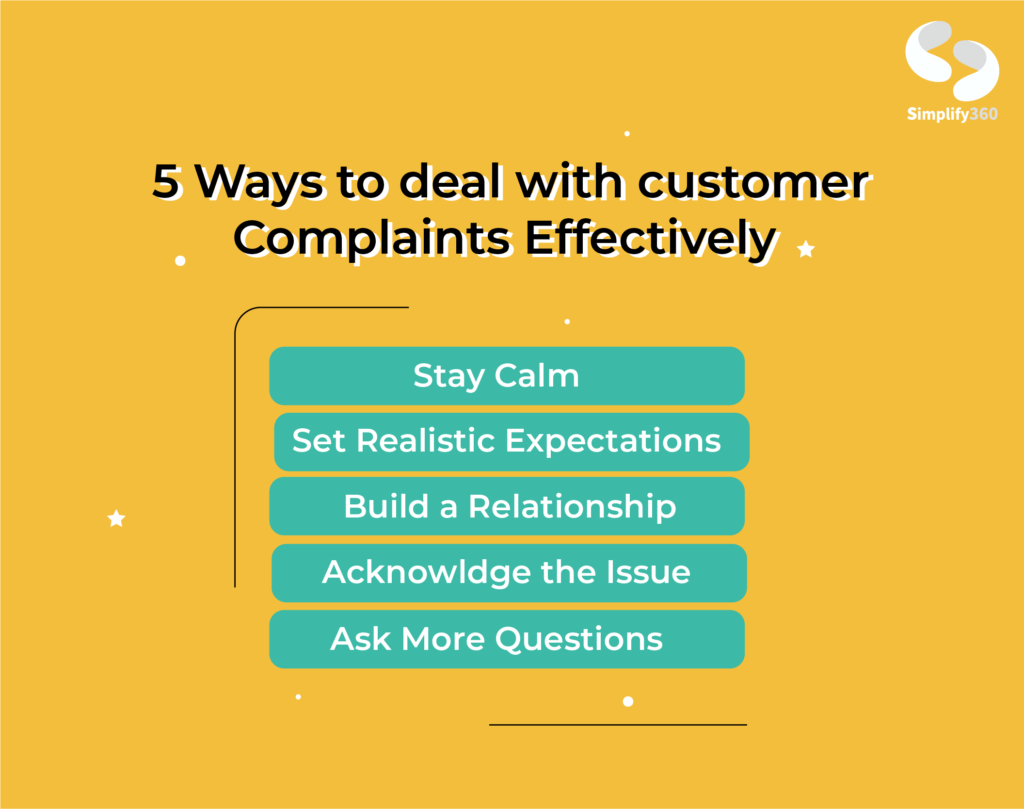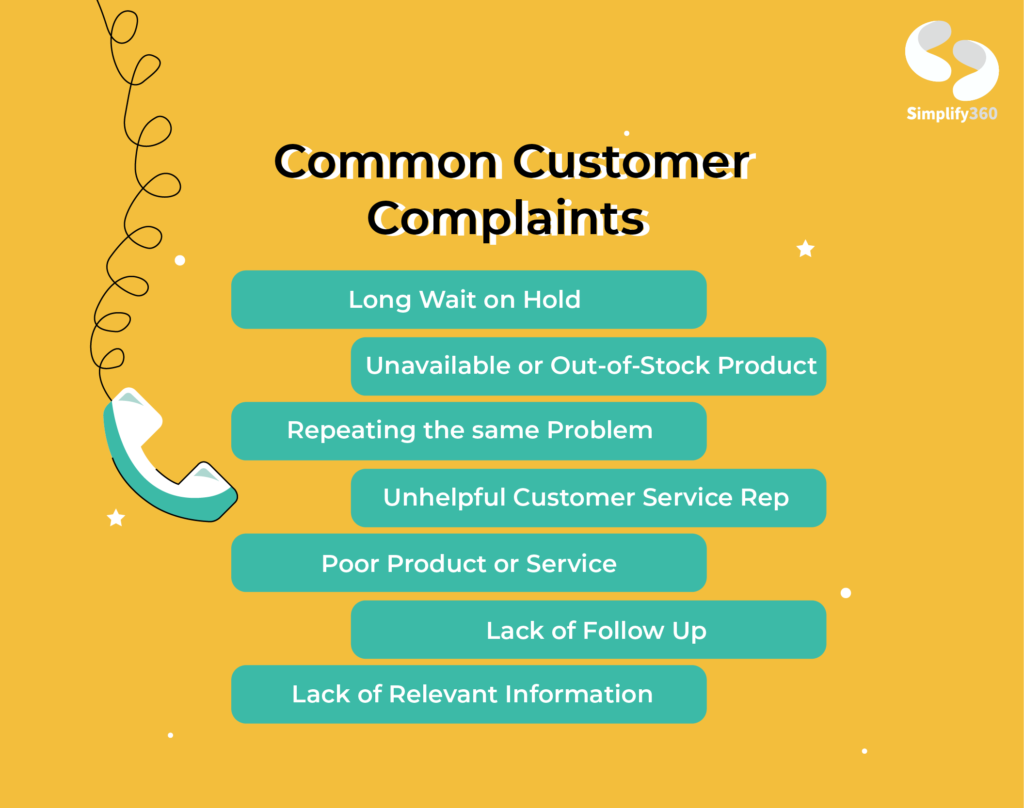Modern customers are more powerful than ever before!
They have the resources, the agency, and the will to be open about their experience with your brand. Customers today believe in brands that actively apologize for their mistakes. Hence, accountability in customer service is the new shiny toy.
However, nothing is out of your control!
When a customer complains it is (more often than not) for one major reason – bad customer experience. This could either be a bad service experience or product failure. Nevertheless, with a diligent customer service team, you can turn any upset customer into a loyal customer.
Therefore, CX is the new heart of marketing strategies.
Check out the most exciting CX trends in 2023 with the help of this guide
👉10 Customer Experience Trends You Need to Look Out For in 2023
Now that you know your customers’ expectations in 2023, let’s see some ways you can serve dissatisfied customers.
For this blog, we decided to approach customer experience with a twist. Rather than helping you with plain ways to improve your CX, we have come up with ways to handle customer complaints like a pro.🦸
But before we dig into customer resolution tricks let’s lay out some groundwork.
In this blog, our main focus will be on the following points.
- What are Customer Complaints?
- Different Types of Customer Complaints
- How to Deal with Customer Complaints?
- Customer Complaints Resolution Techniques
Read closely to explore some promising tips and tricks for your customer service team!
What are Customer Complaints?
Before we understand customer complaints, let’s understand what these are not!
Unlike popular misconceptions, complaints aren’t necessarily a negative concept. As a brand, it is difficult to hear criticism and negative comments. But, complaints regarding your product or service are not to be taken personally.
If you look at these from a different angle, customer complaints are quite valuable.
Why?
Customer complaints are nothing more than negative feedback from your customers.
Customers complain when they witness a gap between your claims and delivery. Therefore, they act as a window for you to identify your setbacks.
Here’s a simple definition for you!
Customer complaints are customer expectations that have not been met in what businesses have promised in terms of products or services.
Therefore, irrespective of the industry you serve, you must address customer complaints.
Why Addressing Customer Complaints is a Necessity?
85% of customers trust online feedback as much as they trust personal recommendations!
Now that’s a huge number of customers lost if you don’t pay attention to customer feedback.
As a business, you promise customers a certain standard of service or quality of product! When these standards are not met, any loyal customer is sure to turn into an upset customer. As a marketing business, the duty to reverse this is your responsibility.
Today, consumers are vocal about their business experiences. They value brands that strive to improve their experience. Doing so (simply) makes your customers feel valued.
After all, the customer is at the center of modern marketing. Thus, handling customer complaints is a must. You simply must appease your customers because you need their approval for a thriving business.
Every unhappy customer is a customer lost! They act as a potential catalyst in reducing your customer base.
That being understood, let’s see how you can use customer complaints for your benefit!
Benefits of Customer Complaints
It is no secret that online reputation is crucial to establish your brand’s image. And gaining customer feedback is a step in that direction. Here is how customer complaints enable you to enhance your business’ reputation.
1. Increases Customer Satisfaction
A dissatisfied customer to a brand is like a termite to a house. They multiply rapidly and before you know it, the damage is done. Hence, it is crucial that you continuously make efforts to improve customer satisfaction.
One of the easiest ways to achieve this is by collecting customer feedback.
As we have already established, customer complaints are no different than negative feedback. When your customers complain, they invite you to understand their expectations of your brand. Take this opportunity to identify the root cause of the issue. Analyze if there have been multiple complaints on the same issue.
Investigating a certain issue to its root cause helps you eliminate the future occurrence of the same issue.
2. Enables Product or Service Upgradation
When clients decide to report an issue with your product, service, or feature, it is a golden opportunity for you. Imagine the client instead taking their frustration to a review website. Now, that’s chaos! But, a client reaching out to you allows you to improve your product or service.
Therefore, customer complaints are an insight into areas that need to be upgraded. Moreover, by studying negative reviews you can strategize ways to improve your product even more.
Check out these review response templates for a quick resolution,
👉100 Foolproof Review Response Templates For You to Use
3. Facilitates Policy Improvement
As a company, you must have numerous policies and procedures designed for a smooth business. Yet, sooner or later discrepancies in these policies will be encountered.
Negative feedback highlights flaws in your internal process. Analyzing this information helps you understand the practicality of your company policies.
Hence, customer complaints about a fault in your internal procedure indicate it is time to revisit your policies.
4. Boosts Customer Communication
Last but not least, a customer complaining is still a customer communicating!
A client reporting an issue shows two things
- The client’s trust in you to resolve the issue
- A good customer-brand relationship
However, the continuity of the aspects mentioned above depends on how your customer complaint procedure follows.
By now you must have understood that customer complaints are important to address. Moving on, let’s see how you can deal with customer complaints.
How to Deal With Customer Complaints In a Better Way?
Here are 5 proven changes that will help you address customer complaints better.
1. Stay Calm
One of the most important pieces of advice we can give you while dealing with criticism is to remain calm.
As we mentioned earlier, do not take the criticism personally.
Customer complaints are harsh. These are frustrated angry customers seeking a resolution to their issues. The last thing they want is to deal with an anxious customer service team. Use your best knowledge to calm the customer. Provide them with ways to clear the confusion.
If you need to transfer the call to a senior executive, explain to the customer the process before doing so.
2. Set Realistic Expectations
We admit this one might be a bit tricky!
When you’re faced with someone emitting anger at you, you are eager to escape the situation. What follows through is a bunch of abstract claims with no guarantee. This creates a trap. An already dissatisfied customer wants clarity.
Therefore, be upfront with the customer about everything. Explain how long it may take to resolve the issue. Don’t make promises you cannot keep.
Understand that by not overpromising you are not letting your customers down.
3. Build a Relationship
Building and maintaining relationships with customers is crucial. It paves the ground for success, profit, and eventually the growth of your business.
A customer complaint is like a peek into your own business from a third person’s perspective. It helps you identify the areas that have more potential with minor tweaks. To retain dissatisfied customers your customer service reps must make them feel valued.
Train them to use words of reassurance. Once dissatisfied customer knows they are being heard, they will calm down. And you will have a better chance of resolving their issue.
Lorem ipsum dolor sit amet, consectetur adipiscing elit. Ut elit tellus, luctus nec ullamcorper mattis, pulvinar dapibus leo.
4. Acknowledge the Issue
When the customer calls with an issue your customer service rep has two issues at hand:
- The issue raised by the customer
- The chance of losing the customer
As you do understand this is a delicate situation. And you must handle it graciously.
Our best suggestion is to accept that a mistake has been made. Instead of passing the blame around departments address the customer complaint graciously. Apologize to your customer. If possible, try explaining the reason behind the failure of the product/services.
This reflects smooth internal processes to deal with unhappy customers.
In other words, the more helpful you appear, the better you can resolve the issue.
5. Ask More Questions
If you are a customer service rep, you know not all customer complaints are a fault of your brand.
Often customer issues include their own misunderstanding of the working of a product. This doesn’t mean that you treat it any differently than customer dissatisfaction.
Keep yourself in their shoes and understand their frustration. Your company’s product may be a piece of cake for you to handle, but not for every customer.
ASK QUESTIONS!
To effectively deal with and retain this category of customer, enquire about their issue as much as you can. This will help you understand the root cause of the customer’s complaint.
Now that you know how to deal with customer complaints let’s look at 7 common complaints that exist.
7 Common Customer Complaints
It is true that complaints vary from customer to customer. But, more often than not complaints follow a certain pattern. Read the below listicle to understand common issues raised by customers.
This can help you in strategizing for common issues leaving more time for complex issues to be resolved.
1. Long Wait on Hold
Customers that call you with a complaint are already frustrated. Making them wait in a queue for a long time only adds up to this frustration.
Having customers wait a long time also means added customer churn. This is futile to both – customers as well as customer service representatives.
What you can do: We recommend you identify common questions raised by your customers. Create an information board or FAQs answering these queries. You can also deploy AI chatbots on your help page to reduce customer churn.
2. Unavailable or Out-of-Stock Product
Having a product out-of-stock is a good sign. It indicates that your brand is making progress. And, it reflects the same on potential customers as well. The biggest benefit of it is it instigates faster sales creating a want among customers.
But, if a product stays out-of-stock for a long time, customers become impatient. This way, the ‘want’ made for the product compels customers to satiate it from some other resource. Situations like this bring in an overwhelming majority of customer queries.
What you can do: As a customer service representative, you do not have much say in it. You cannot decide or guarantee when new shipments will be ordered. The most that you can do is report the issue to your managers and escalate the issue. Raise tickets.
However, you must encourage customers to wait patiently.
This type of proactive customer service acts as an assurance for customers. They believe that their time is valuable for the business as well.
Here is an article for your agents to improve their customer service skills.
3. Repeating the Same Problem
Customers hate repeating their problems to reps.
Transferring customer complaint calls from one rep to another often results in the customer backing out. Mainly because of having to repeat the same issue again and again.
What can you do: The first thing to do when a customer complains about having to repeat their issue is to stop transferring their call. If an intervention is required from a senior executive, check if you can do it internally. This may sound more tedious but meets customer expectations immediately.
However, the best way to deal with this issue is to invest in an omnichannel platform like Simplify360. We enable you to integrate all your channels and departments. This creates a common dashboard for different departments. This way all your reps are aware of all the customer data. As a result, before the customer raises an issue, your rep already knows all about their purchase.
4. Unhelpful Customer Service Rep
Friendly service agents are the key to a good customer experience.
Reps who lack conversational skills leave a bad impression on buyers. Especially when a customer is already frustrated, the last thing they want is an unfriendly agent.
On the other hand, irrespective of the service provided, some customers simply don’t get along with customer service representatives.
Whoever may be at fault, when a rep fails to meet customer needs, customers think it’s because of a lack of sincerity.
What you can do: The best thing to do here is to empower your agents. This can be done by reducing customer churn. Improve your agent productivity. Another step that can you do is to hire agents with great conversational skills. Teach empathy to your agents.
5. Poor Product or Service
Frustration is quite natural when your customer faces a product failure or inadequate failure. This is because the customer expects respect for the time and money they have invested in your brand.
However, it is not always a product failure that raises this complaint. Sometimes, your customer is simply unaware of the product’s functioning.
Whatever it may be, it is crucial to stop your customer from turning to your competitors.
What you can do: There are two approaches to resolving an issue like this.
If the product isn’t facing an issue, then guide your customer step by step. Be clear with your instructions. Use simple language and avoid heavy technical terms.
If the product is broken, tread lightly. Accept your mistake. Make an apology. Provide options for immediate replacement. However, do not miss out on enquiring how the product broke. Determine if it was the result of user error. Be gentle in your approach if the user is at fault and educate them on how this can be avoided in the future.
6. Lack of Follow-Up
Different customers have different follow-up conversation expectations. Some want to be constantly updated. Whereas others are patient and prefer to avoid continuous updates. In any case, consistency should not be compromised.
If your reps aren’t conversing enough, your customers might feel taken for granted.
What can you do: The best way to avoid any confusion is to ask what the customer wants, and how they want it. Be clear. Ask them if their preference is continuous updates or if they wish to be updated only when needed. This shows a dedication to fulfilling customer needs.
If you feel your reps are failing at keeping a tab on follow-up, adopt a ticketing system.
7. Lack of Relevant Information
Many customers prefer self-service. Not all customers want to reach out to reps for the first problem they encounter. And yet, companies fail to update their knowledge boards continuously.
When a customer reaches out to your reps raising this complaint, your rep should be able to direct them to a help center, chatbot, or FAQs page.
What you can do: Establish a sound knowledge system. Build a knowledge base. And be consistent in updating it.
Merely having a knowledge system isn’t enough. If your FAQ articles are outdated and offer false/ old information, your customers are bound to be frustrated. This also adds pressure on your agents to help them solve the issue.
Therefore, establish a department dedicated to updating your product information.
Conclusion
One thing that we focus you take away from this article is the importance of addressing customer complaints. Modern industries may not believe that the customer is always right! But, it still revolves around customers.
Any customer complaint left unresolved can soon turn into chaos. A single negative feedback on social platforms is enough to ruin your year-long efforts.
Implement the simple tips and tricks pointed out in the article and stand out among your competitors.
Listen actively! Deliver pro-actively!



